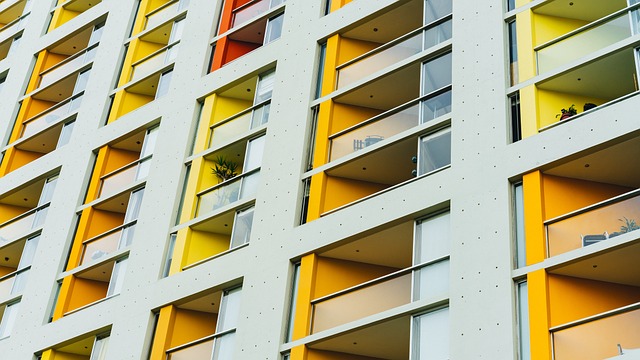Before creating a DIY motion-sensor alarm for your apartment, assess its layout and security needs, tailor the system to detect unexpected activity while ignoring pet movement (if applicable), and ensure seamless integration into your routine. Using affordable and customizable components like Arduino, motion sensors, power source, speaker, tools, and casing, you can build an effective, personalized security solution. Regular testing, battery checks, dust removal, and firmware updates maintain optimal performance for robust DIY apartment security.
Enhance your apartment’s safety with a DIY motion-sensor alarm system. This guide breaks down everything you need to know, from understanding your building’s unique security needs to selecting the right components and tools. Learn how these innovative devices provide robust protection without breaking the bank. We’ll walk you through installation, testing, and maintenance tips for a customized, efficient do-it-yourself security solution tailored for apartment living.
- Understanding Your Apartment's Security Needs
- Benefits of DIY Motion Sensor Alarms
- Components and Tools for Building Your Alarm System
- Installation, Testing, and Maintenance Tips
Understanding Your Apartment's Security Needs

Before setting out to create your own motion-sensor alarm, it’s crucial to assess the specific security needs of your apartment. Every space is unique, with varying degrees of potential entry points and areas requiring protection. Consider the layout of your apartment—are there windows that require monitoring, or doors leading to common areas? Do you have valuable items or spaces that demand enhanced privacy? Understanding these aspects will help you determine the most effective placement for your DIY security system.
Additionally, think about your lifestyle and habits. If you often work late or travel frequently, a motion-sensor alarm can provide peace of mind by automatically detecting and alerting you to any unexpected activity. For those with pets, customizing the sensors to ignore animal movement but trigger alerts for human intruders is essential. Tailoring your do-it-yourself security for apartments ensures it fits seamlessly into your routine while offering robust protection.
Benefits of DIY Motion Sensor Alarms

DIY motion sensor alarms offer an affordable and customizable solution for enhancing apartment safety. Unlike traditional alarm systems, these do-it-yourself options allow residents to install and personalize security measures according to their specific needs. By integrating motion sensors, these alarms detect unexpected movements, providing an early warning system against potential intruders. This proactive approach empowers individuals to take control of their personal spaces, promoting peace of mind in the comfort of their homes.
For apartment dwellers, DIY motion sensor alarms are particularly advantageous as they offer flexibility and cost-effectiveness. Residents can strategically place sensors at entry points, windows, or valuable asset locations, creating a layered security system. Moreover, these alarms often come with user-friendly applications that enable remote monitoring and control through smartphones, allowing owners to stay alert and connected to their apartment’s safety even when away.
Components and Tools for Building Your Alarm System

Building a DIY motion-sensor alarm system is an accessible way to enhance your apartment’s security. To get started, gather essential components like a microcontroller (e.g., Arduino), motion sensors (like PIR or passive infrared sensors), a power source, and a speaker for alerts. Additionally, you’ll need basic tools including wire strippers, soldering iron, breadboard, jumper wires, and a casing to house your setup. These elements combine to create an effective, personalized security solution tailored to your apartment’s specific needs.
The microcontroller acts as the brain of the system, interpreting sensor data and triggering alerts when motion is detected. Motion sensors are crucial for identifying unwanted intrusions, while a reliable power source ensures uninterrupted operation. A speaker provides clear audible warnings, and a casing protects the components from environmental damage. With these tools and parts, you’re well-equipped to craft a robust do-it-yourself security system for your apartment.
Installation, Testing, and Maintenance Tips

Installation
Setting up a motion-sensor DIY alarm is surprisingly straightforward and can be accomplished with minimal tools and materials. Start by choosing a location strategic for maximum coverage, such as near entry points or windows. Mount the sensor securely, ensuring it has a clear view of the area to be protected. Connect the sensor to the control panel according to the manufacturer’s instructions, which typically involves simple wiring or Bluetooth pairing. Test the system immediately after installation to ensure all components function correctly.
Testing and Maintenance
Regular testing is crucial for maintaining optimal performance in do-it-yourself apartment security systems. Periodically trigger the motion sensor using a friend or a test button to verify its responsiveness. Check battery life and replace batteries as needed, following the manufacturer’s guidelines. Keep the sensor free from obstructions and dust to maintain sensitivity. Update firmware if available to enhance system reliability and integrate any new features offered by the manufacturer. By incorporating these simple steps into your routine, you can ensure your motion-sensor DIY alarm remains a reliable deterrent for potential intruders, providing enhanced safety for your apartment.
DIY motion sensor alarms offer a cost-effective and customizable solution for enhancing apartment safety. By understanding your unit’s specific needs and leveraging simple tools, you can create an effective security system that provides peace of mind. With the right components and some basic installation knowledge, do-it-yourself security for apartments becomes an accessible way to protect your space and loved ones. Regular testing and maintenance ensure your alarm remains reliable, providing a safer environment for those who call your apartment home.
